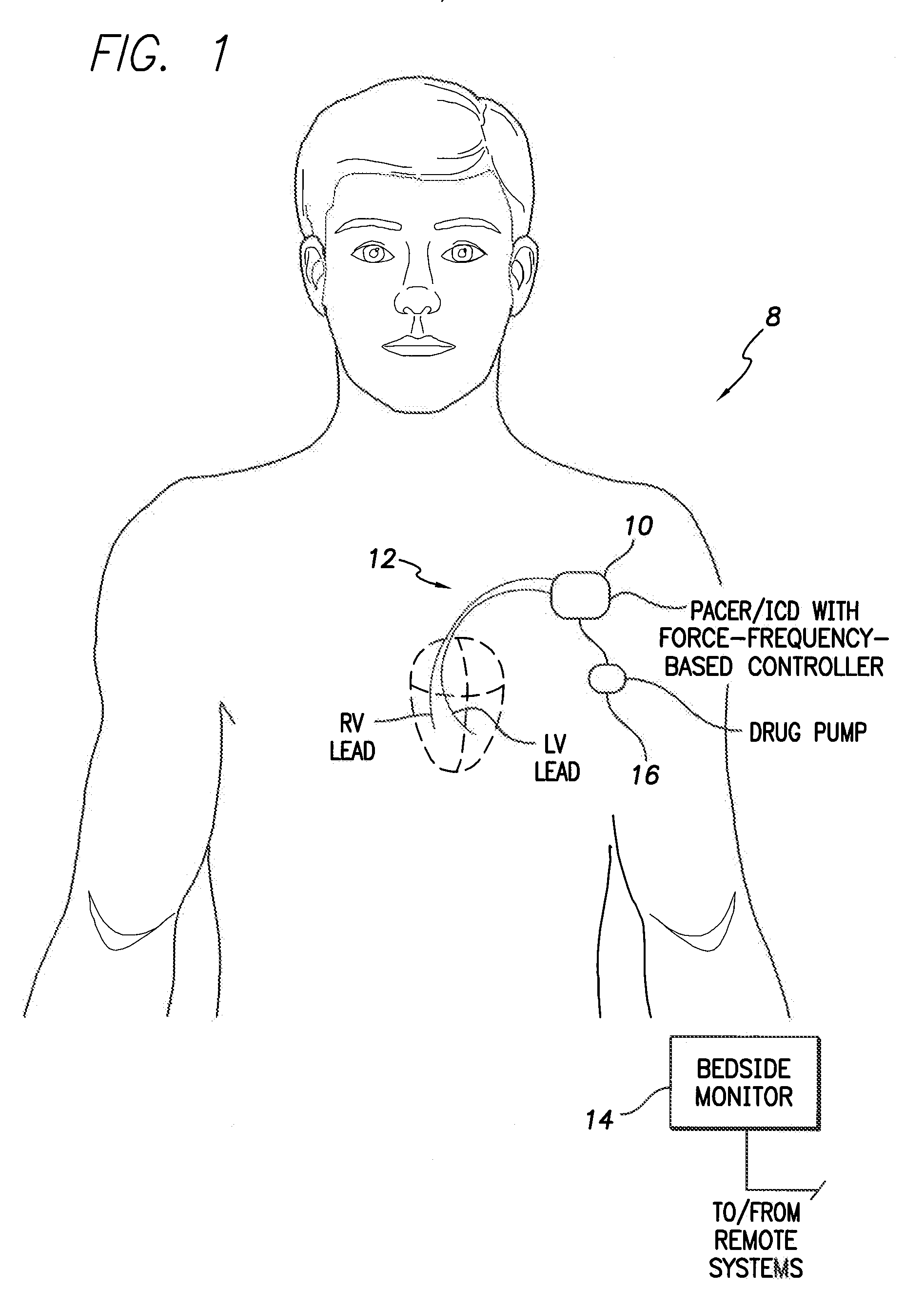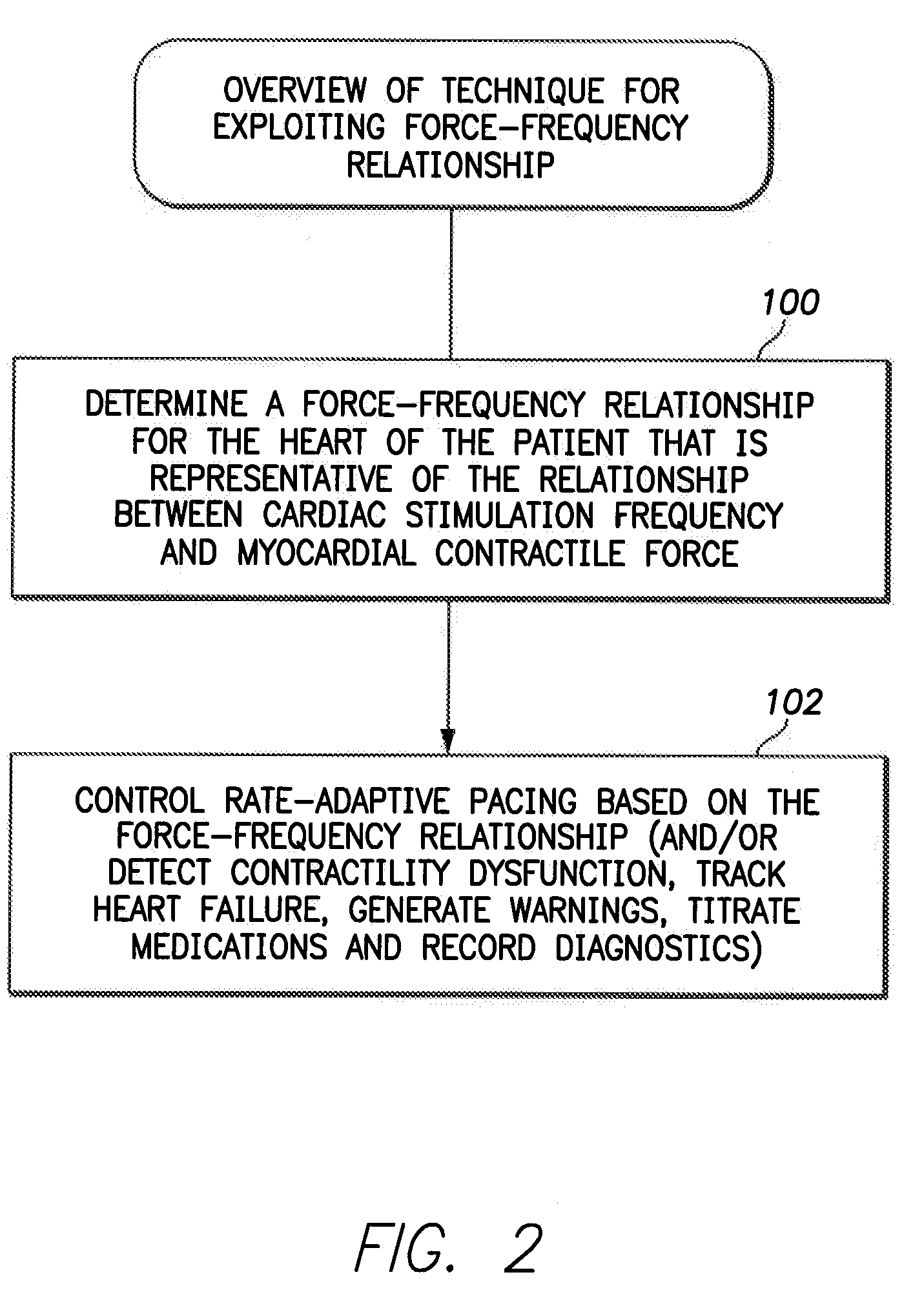System and method for controlling rate-adaptive pacing based on a cardiac force-frequency relation detected by an implantable medical device
a technology of force-frequency relation and rate-adaptive pacing, which is applied in the direction of suction devices, catheters, therapy, etc., can solve the problems of inappropriate rate-adaptive pacing, increase contractility dysfunction, and decrease the slope and/or abscissa. , the effect of decreasing the slope and/or abscissa
- Summary
- Abstract
- Description
- Claims
- Application Information
AI Technical Summary
Benefits of technology
Problems solved by technology
Method used
Image
Examples
Embodiment Construction
[0026]The following description includes the best mode presently contemplated for practicing the invention. This description is not to be taken in a limiting sense but is made merely to describe general principles of the invention. The scope of the invention should be ascertained with reference to the issued claims. In the description of the invention that follows, like numerals or reference designators will be used to refer to like parts or elements throughout.
Overview of Implantable System
[0027]FIG. 1 illustrates an implantable medical system 8 capable of determining, monitoring and exploiting the force-frequency relationship within the heart of a patient and, in particular, for controlling rate-adaptive pacing based on the force-frequency relationship. To this end, medical system 8 includes a pacer / ICD 10 or other cardiac rhythm management device capable of detecting one or more parameters representative of myocardial contractile force via cardiac sensing / pacing leads 12 implante...
PUM
 Login to View More
Login to View More Abstract
Description
Claims
Application Information
 Login to View More
Login to View More - R&D
- Intellectual Property
- Life Sciences
- Materials
- Tech Scout
- Unparalleled Data Quality
- Higher Quality Content
- 60% Fewer Hallucinations
Browse by: Latest US Patents, China's latest patents, Technical Efficacy Thesaurus, Application Domain, Technology Topic, Popular Technical Reports.
© 2025 PatSnap. All rights reserved.Legal|Privacy policy|Modern Slavery Act Transparency Statement|Sitemap|About US| Contact US: help@patsnap.com



